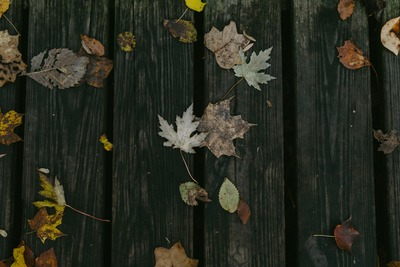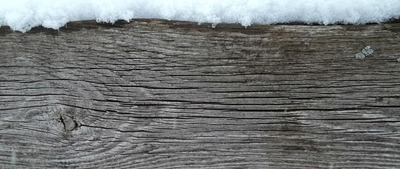As the seasons continue to change and we progress into the winter and the colder weather, we must ensure that our decking is protected from any negative weather.
Here are the best ways to protect your decking from the winter weather:
Should I cover my decking for winter?
When it comes to winter, having snow on your decking and your garden can be an amazing sight, but it can have negative effects. When covering your decking, this added barrier between the snow, ice and colder weather and the decking can prevent warping.
As well as the prevention of warping, by keeping moisture out of cracks, you'll reduce the risk of ice formation that will make cracks worse. This is especially important if you already have cracks in your decking.

Ways To Protect My Decking
1. Clearance
As the weather starts to get colder and the season adjusts to winter, you should clear any clutter on your decking away.
If you leave items on your decking, such as planters, that are left out all winter can cause moisture leaching, which may leave behind wood discolourations on your decking.
When clearing your decking, store them in your garage or under your deck instead. Likewise, patio furniture should also be stacked and stowed away for the winter.
2. Removing Debris
When it comes to keeping your home exterior ready and safe for the winter is to keep things clear from debris, this will also reduce the amount of spreading of mould and debris on and surrounding your decking and garden areas.
It is important to keep your deck surface clean. Just as how debris on your roof can cause damage, especially during the winter and colder times throughout the year, this debris can also be removed with extra accessories which are always helpful.
When debris is left to rot on your deck surface will cause deterioration which has the ability to spread throughout your decking and garden.
3. Removing Mold
On your decking, if you have any mould and mildew that might be present on the deck surface, this mould should be removed, especially because decks are a common breeding ground for them
During the winter and the colder weather, the moisture on your deck will attract mould and mildew, especially between tight boards or cracks in the decking, especially if there are cracks which are already present on the decking.
4. Covering It Up
When it comes to winter, to prevent snow, ice and frost from collecting directly on your deck’s surface, cover as much of your deck as possible with a tarpaulin.
This will create a constructive layer between your decking and the frost which removes any potential mould or debris from your decking, especially if you have cracks, this will prevent further maintenance costs.
When adding the extra layer to your decking, will also prevent any warping to your decking, as well as, keep the moisture out of any cracks, which also reduces any ice form which makes the cracks worse.
5. Removing Snow, Ice and Frost
As snow accumulates at your home, and in your garden, it is important to remove the accumulation of snow on your house.
When snow damages your roofing and gutter systems at your home, if your decking collects mounds of snow this can also ruin your decking.
When snow builds on your decking, Remember to shovel in the same direction as the boards run to avoid damaging your deck’s finish, which also reduces decking maintenance costs.

How to clean decking in winter?
As it comes closer to winter, your decking may become more difficult to clean during the colder weather, so here is how to clean your decking during the winter period.
As the winter months aren’t considered the peak season to clean decking and relax outside after a stressful day at work, the longevity of your decking is important.
However, ensuring your decking survives the harsh weather we brits endure through the winter is vital for prolonging the life of your garden sanctuary. After investing time and money into your decking, the next step, naturally, is to maintain your deck so you can enjoy it for many years to come without lots of maintenance costs.
Snow Protection
When originally clearing your decking for the build-up for the winter weather. Snow needs to be continuously removed as quickly as possible; the buildup of snow and ice can cause rotting to the structure of your decking.
When clearing your decking from snow, ice, frost and any side effects of the colder weather, try to avoid using a shovel as this will drag across the wood and damage it.
Protection
With the progression of colder weather, another important step in protecting your decking and the most proactive measure to take to achieve clean decking would be to use a protector which can be decking stains or oil.
The decking protector is absorbed by the water already present in the wood, giving it a waterproof layer, whereas the decking stain will permanently dye the decking, making it weatherproof. A decking oil applies a thin layer of oil that prevents stains and minor damage while adding a fresh and subtle colour to the wood, which enables protection for your decking.
It is important to keep your deck surface clean. Just as how debris on your roof can cause damage, especially during the winter and colder times throughout the year, this debris can also be removed with extra accessories which are always helpful.













